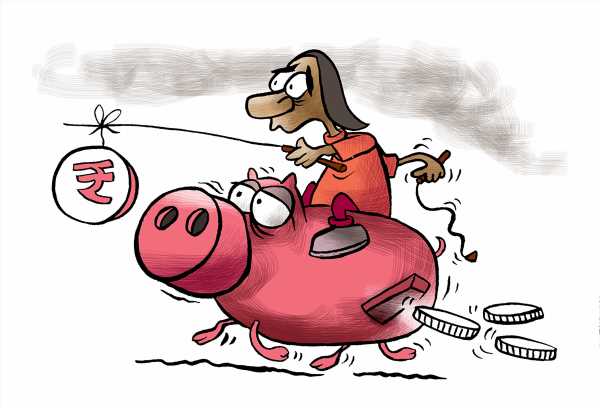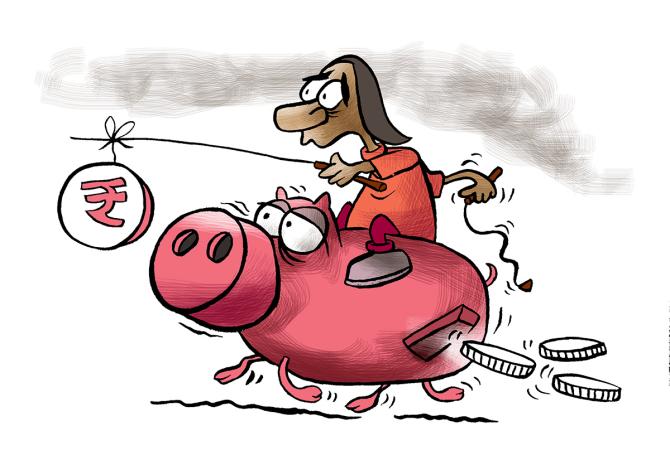Most investors should restrict exposure to this volatile segment to 10 per cent of their equity allocation.
Small-cap funds have enjoyed a massive run-up over the past year.
The category has turned in an average return of 109 per cent — the best-performing fund has yielded a humongous 201 per cent.
Many investors, however, are concerned whether the category has turned risky after such a sharp rise.
View returns in perspective
Small-caps and mid-caps did not perform in 2018 and 2019.
They were recovering in 2020, when the first lockdown began in March, triggering a correction.
Small-caps fell again from an already low base.
“The strong performance of small-cap funds has been driven by reversion to mean after two years of weak performance,” says Vinay Paharia, chief investment officer (CIO), equity, Union Asset Management Company.
New investors entered the equity market in significant numbers last year.
“This segment’s performance can also be attributed to the exuberance of these investors,” says Paharia.
The small-cap category’s returns are not steep when viewed over a longer horizon.
“Over the three- and the five-year period, this category’s returns are in line with that of mid-cap and large-cap categories,” says Arun Kumar, head of research, Fundsindia.com.
Performance can continue
Experts remain bullish on this segment’s long-term prospects.
“India is structurally a high-growth economy.
“Many smaller companies with differentiated or niche business models, operating in high-growth segments, are bound to do well,” says Paharia.
Valuations have turned expensive, but only in pockets.
“Many fundamentally sound companies in the small-cap space have robust business models and strong balance sheets.
“They are gaining market share at the expense of their weaker peers or the unorganised sector.
“These are the stocks investors are chasing,” says Sandeep Daga, managing director and CIO, Nine Rivers Capital.
He manages the Aurum Small Cap Opportunities Fund, a PMS (Portfolio Management Services) scheme that has delivered a one-year return of 201 per cent (as on May 31).
According to Daga, there is still a lot of value to be found in the small-cap segment in undiscovered ideas.
To assess valuation, analysts compare the market capitalisation of a segment with that of the entire market.
“If small-caps’ share rises above 15 per cent, it indicates they have turned expensive.
“At the start of 2018, it stood at around 19 per cent.
“At present it is at 11-12 per cent. So, they are still not too expensive,” says Kumar.
Book partial profits
Most investors should restrict exposure to this volatile segment to 10 per cent of their equity allocation.
“If the weight of small-cap funds has risen above 15 per cent in an existing investor’s portfolio, he should book partial profit and bring it back to 10 per cent,” says Kumar.
New investors may enter these funds even at current levels.
“Allocate to the large-cap and mid-cap categories first and then enter small-cap funds, provided you have a moderate to high risk profile,” says Harshad Chetanwala, co-founder, MyWealthGrowth.com.
Only those who have a horizon of more than seven years should enter.
If the market corrects, say, due to poor corporate performance in the first quarter of 2021-22, these funds could take a hit.
“Avoid lump-sum investment and opt for the SIP route instead,” says Manish P Hingar, founder, Fintoo.
When selecting a fund, seek a consistent performer—one that has done well across at least one bull and one bear phase.
A steep fall during a bear phase indicates poor risk management.
Look for funds with quality stocks in their portfolios.
Sound portfolio quality will give you the confidence to hold on to your fund during the inevitable bear phases.
Finally, avoid funds that chase momentum and stick to those with low portfolio turnover.
Source: Read Full Article


